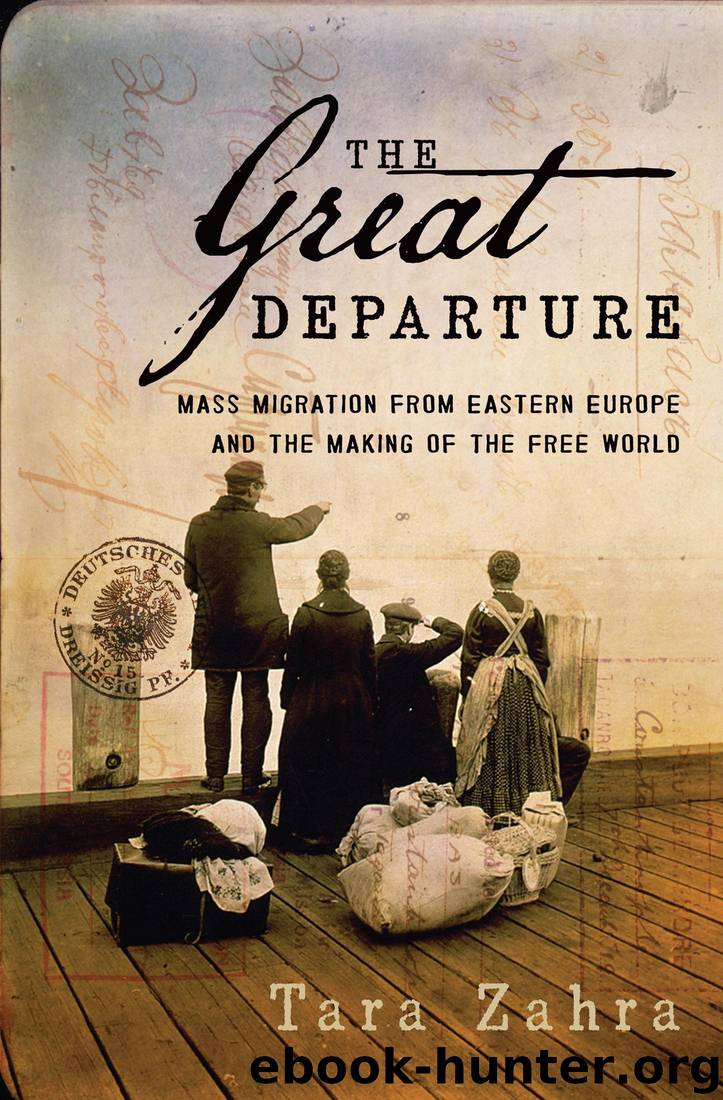0393078019 (N) by Tara Zahra

Author:Tara Zahra
Language: eng
Format: mobi, azw3, epub
Publisher: W. W. Norton & Company
Published: 0101-01-01T00:00:00+00:00
WITH THE CONSOLIDATION of Cold War rivalries, the process of sorting refugees—and transforming them into migrant workers—became even more complicated. A new world emerged after World War II in which official recognition as a “refugee” brought new forms of privilege and protection, including the right to asylum and to international legal and social assistance. These privileges were doled out selectively, however.67 The IRO’s 1947 constitution introduced the first rigid distinctions between political and economic refugees. Henceforth, individuals were considered refugees (and entitled to IRO assistance) only if they expressed “valid objections” to repatriation based on actual experiences of persecution, or “fear based on reasonable grounds of persecution because of race, religion, nationality, or political opinion.”68 The 1951 Geneva Convention anchored this distinction in international law, defining a refugee as an individual
who owing to a well-founded fear of being persecuted for reasons of race, religion, nationality, membership of a particular social group or political opinion, is outside the country of his nationality and is unable or, owing to such fear, is unwilling to avail himself of the protection of that country; or who, not having a nationality and being outside the country of his former habitual residence as a result of such events, is unable or, owing to such fear, is unwilling to return to it.69
This definition embedded emerging Cold War precepts into new understandings of human rights. It explicitly privileged political freedoms and civil liberties over economic rights. Yet at the same time that government authorities discriminated between economic migrants and “genuine” political refugees, they continued to scour refugee camps for cheap migrant labor.
In the immediate aftermath of the Second World War, classification as a “displaced person” and entitlement to humanitarian assistance had little to do with how or why a person was uprooted. Any Allied citizen displaced abroad before December 20, 1945, was considered a displaced person and entitled to UN assistance. The cutoff date was later extended in the American zone, enabling Jewish refugees who fled from Eastern Europe after the war to enter UNRRA camps. The only migrants excluded from receiving assistance were Germans and those found guilty of collaboration with the Axis. As Cold War tensions escalated, the U.S. government became more interested in fighting communism than in punishing Nazi collaborators. Even refugees who had been members of the German army or Baltic and Ukrainian units of the Waffen-SS were soon eligible for resettlement in the United States. They simply had to argue convincingly that they had been drafted into the Wehrmacht by force, or even that they had voluntarily enlisted out of anti-Soviet convictions rather than hostility to the Allies.70
Once the IRO established a legal distinction between “bona fide” political refugees and economic migrants, the situation changed. It was no simple task, Louise Holborn recalled, “to select genuine refugees and displaced persons among the huge mass of uprooted humanity.” The IRO’s Review Board for Eligibility Appeals, which began to hear cases in early 1948, adjudicated contentious cases. The board, which consisted of a chairman and
Download
0393078019 (N) by Tara Zahra.azw3
0393078019 (N) by Tara Zahra.epub
This site does not store any files on its server. We only index and link to content provided by other sites. Please contact the content providers to delete copyright contents if any and email us, we'll remove relevant links or contents immediately.
Nudge - Improving Decisions about Health, Wealth, and Happiness by Thaler Sunstein(7259)
iGen by Jean M. Twenge(5166)
The Fire Next Time by James Baldwin(5024)
Adulting by Kelly Williams Brown(4240)
The Hacking of the American Mind by Robert H. Lustig(4093)
The Sports Rules Book by Human Kinetics(4079)
The Ethical Slut by Janet W. Hardy(4042)
Captivate by Vanessa Van Edwards(3732)
Mummy Knew by Lisa James(3522)
In a Sunburned Country by Bill Bryson(3375)
The Worm at the Core by Sheldon Solomon(3328)
Ants Among Elephants by Sujatha Gidla(3282)
Suicide: A Study in Sociology by Emile Durkheim(2908)
The Slow Fix: Solve Problems, Work Smarter, and Live Better In a World Addicted to Speed by Carl Honore(2843)
The 48 laws of power by Robert Greene & Joost Elffers(2818)
Humans of New York by Brandon Stanton(2694)
Handbook of Forensic Sociology and Psychology by Stephen J. Morewitz & Mark L. Goldstein(2605)
The Happy Hooker by Xaviera Hollander(2586)
The Tipping Point by Malcolm Gladwell(2565)
